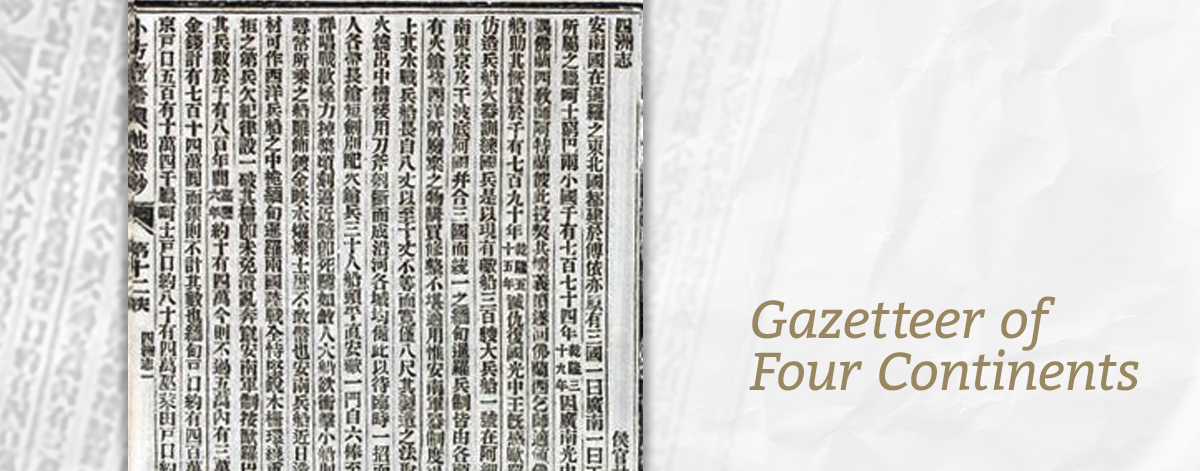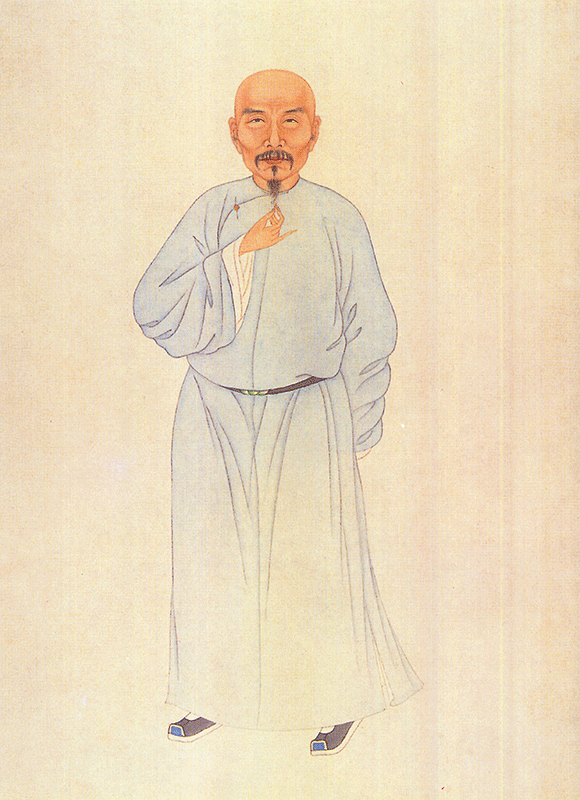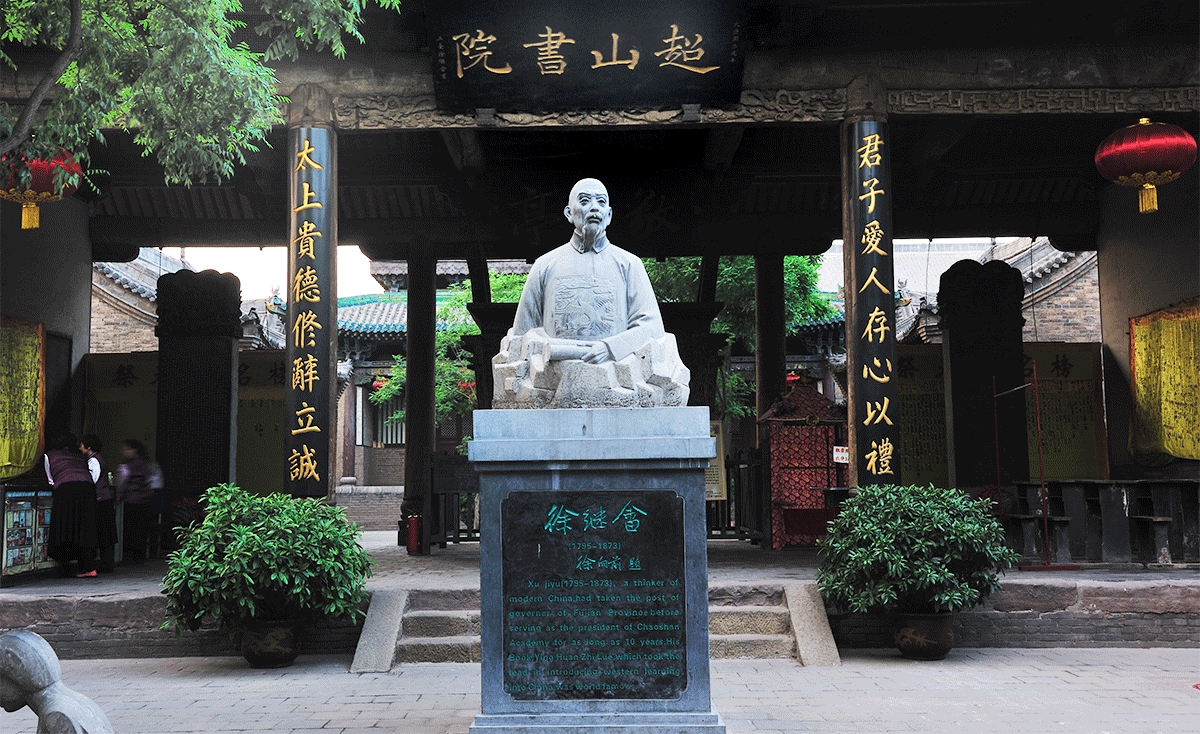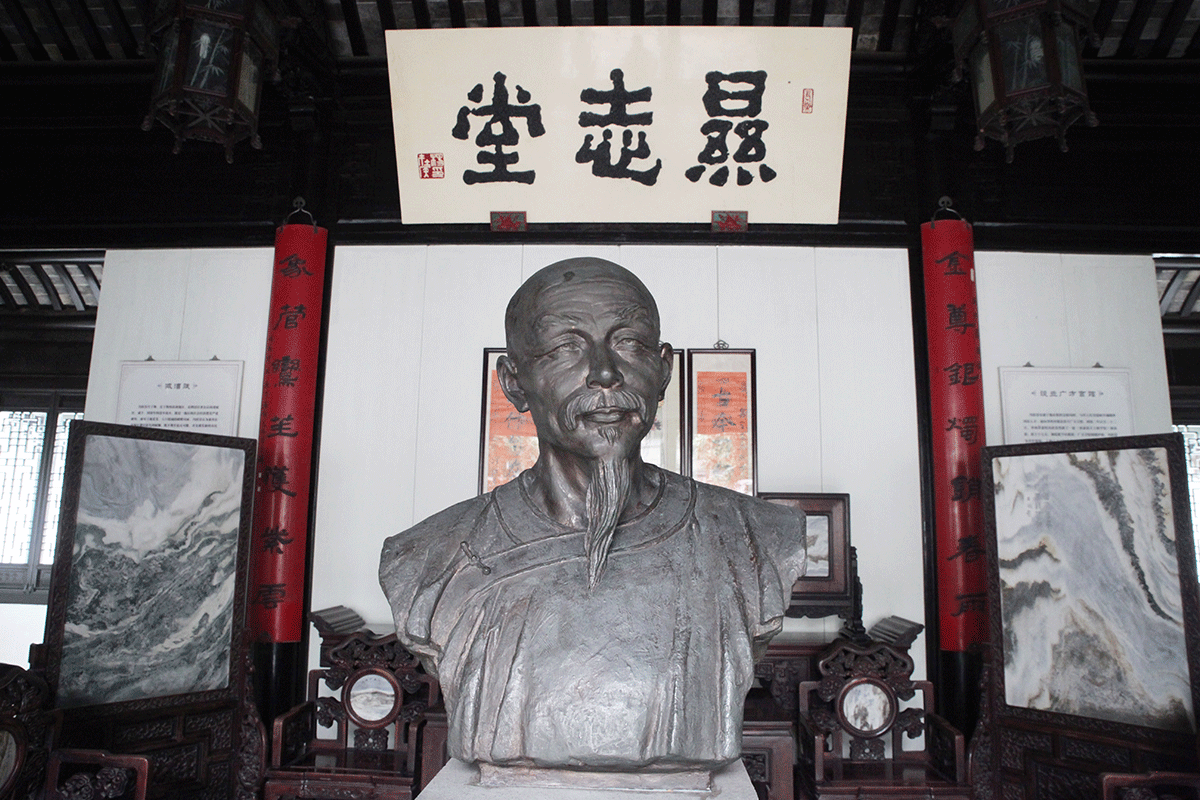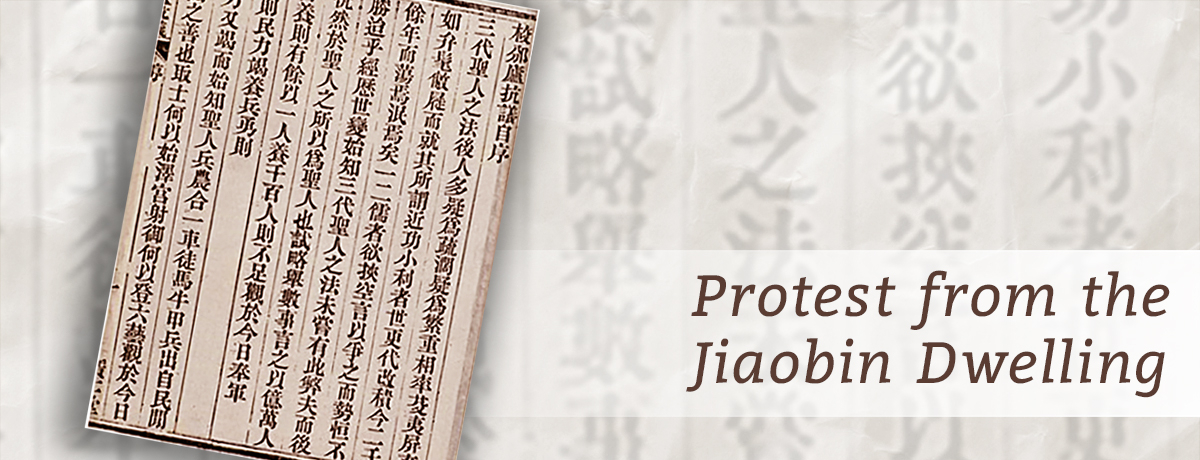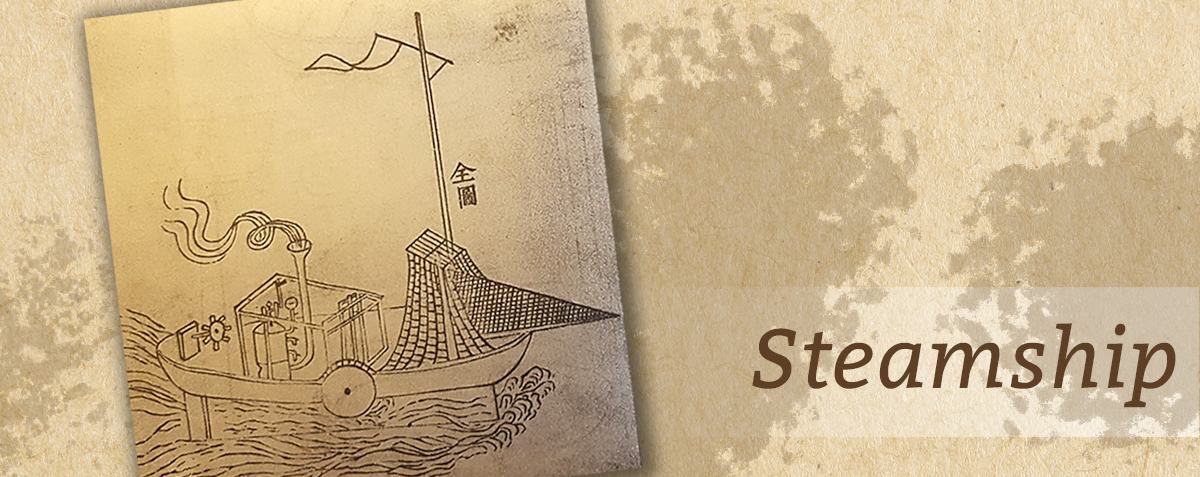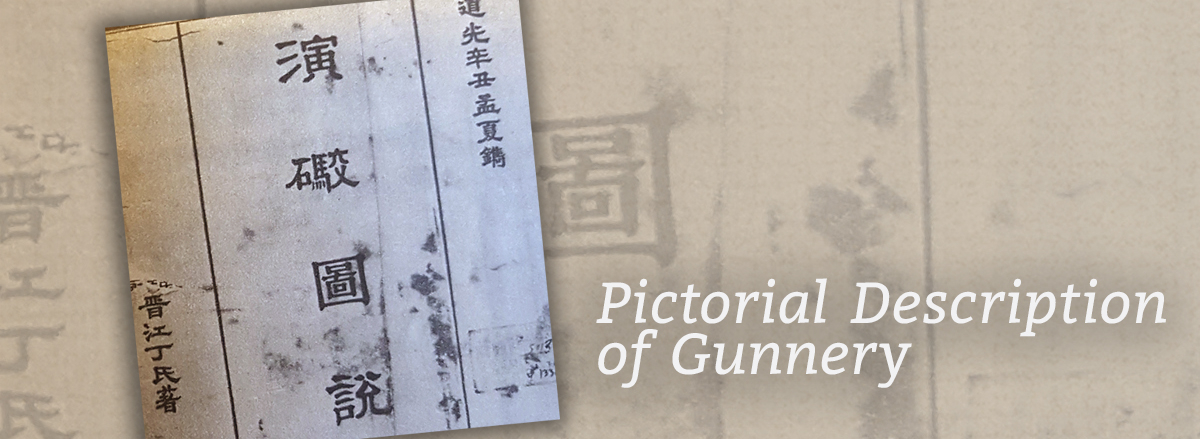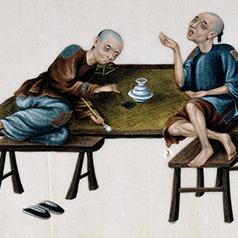The military and diplomatic failures during the Opium War were a painful and shocking experience for China, particularly to Chinese intellectuals. In 1842 after two years of war, Emperor Daoguang (道光) demanded an “honest assessment without reservation” and asked, “How big is Britain? How many dependent territories of Britain are there? Is there a land route between England and Xinjiang (新疆)? Do we maintain contact regularly?” This suggests a dangerous lack of knowledge about an enemy at war.
In order to pursue a better understanding of the world, Chinese scholars and intellectuals scrambled to compile global knowledge. Among them was Imperial Commissioner Lin Zexu (林則徐) who, while fighting in the Opium War, ordered a translation of Scottish geographer Hugh Murray’s Cyclopaedia of Geography (1834). From this Lin created his own Gazetteer of Four Continents (四洲志) and was a pioneer in modern China seeking to understand the outside world. Meanwhile, in 1841 the Chinese scholar Wei Yuan (魏源), on behalf of Lin Zexu (林則徐), produced the first book series of world history and geography known as the Illustrated Treatise on the Maritime Kingdoms (海國圖志, which comprised 50 scrolls, or volumes, later expanded to 100 scrolls). A high-ranking Qing official, Xu Jiyu (徐繼畬) authored A Short Account of the Maritime Circuit (瀛寰志略) in 1849.
Moreover, prior to the Opium War, some Chinese scholars had advocated the modernization of China. Most prominent was Gong Zizhen (龔自珍) – whom Chinese philosopher Liang Qichao (梁啟超) praised for inspiring an era of enlightenment in the late Qing dynasty. Feng Guifen’s (馮桂芬) Protest from the Jiaobin Dwelling (校邠廬抗議, 1861) challenged China to transform and modernize by utilizing Western learning and the manufacture of foreign weapons. He also advocated the reform of the imperial examination system. These Chinese thinkers were pioneers in their attempts to transform feudal China into a modern country.
|
|
Why did China continue to decline in spite of a large intellectual community at the time of the Opium War? |
|
|
See answer below. |
A bust of Gong Zizhen at his former residence in Zhejiang, Hangzhou. Prior to the Opium War, Gong Zizhen had already started advocating the modernization of China. His ideas would influence later reforms.
Gong Zizhen, a mid-Qing thinker and writer, grew up to be a knowledgeable man under the guidance of his grandfather Duan Yucai (段玉裁). Having witnessed the national decline and looming social crisis during the Jiadao years (first half of the 19th century), Gong Zizhen began to study governance and advocate political reform. His efforts would influence later reform movements. He penned the compilation titled Jihai Miscellaneous Poems (己亥雜詩), which contains the famous lines “Bring on the wind and thunder to invigorate China; how sad it is that its ten thousand horses have all fallen silent; I entreat the heavens to rouse itself again; defy convention and bestow us with talented people.” He’s also famous for his essay A Pavilion for Sick Plum Trees (病梅館記) which expresses his wish for reform and modernization. A complete collection of his works has been published for posterity.
During the opium ban, Lin Zexu actively gathered intelligence on the international situation and ordered the collection and translation of resources in foreign languages. Under his direction, the Gazetteer of Four Continents was compiled and translated.
The Gazetteer of Four Continents, a translation of Scottish geographer Hugh Murray’s Cyclopaedia of Geography, gives a brief account of the geography, history and politics of more than 30 countries on four continents and, as China’s first systematic examination of global geography, a trendsetter. For his contribution, Lin Zexu is now regarded as modern China’s “pioneer who sought to understand the world.”
Wei Yuan (魏源), a late-Qing thinker and advocate of new ways of thinking, was a confidant of Lin Zexu. He authored the Illustrated Treatise on the Maritime Kingdoms, a key publication among early modern works that enabled Chinese people to understand the world.
Wei Yuan’s Illustrated Treatise on the Maritime Kingdoms, first published in 1843, is a general category book that covers global technology, geography and history. Pictured are the maps of the Netherlands and northern Italy from Illustrated Treatise on the Maritime Kingdoms.
The preface of the Illustrated Treatise on the Maritime Kingdoms states that the book aims to help readers “learn about skills that the barbarians excel in so as to subdue them,” which means learning the West’s advanced technologies in order to use them in defense of China. Unfortunately, the book had little impact on China; but was instead held in high regard in Japan after making its way there, and helped inspire Japan’s Meiji Restoration. In 1862, a delegation of the Japanese Bakufu government visited China for a study mission. Takasugi Shinsaku, a delegate, wanted to buy the published works of Lin Zexu and other enlightened Chinese intellectuals, e.g. the Illustrated Treatise on the Maritime Kingdoms, in a Shanghai bookstore, but none were in stock. He later wrote in his diary, “The mindset of the Qing people is vastly different from the right and standard one Chinese people used to have; they are entranced by empty words and have little interest in practical knowledge.”
A statue of Xu Jiyu in front of Chaoshan Academy (超山書院) inside the Pingyao Confucius Temple of Taiyuan, Shanxi Province. Xu Jiyu, a late-Qing scholar and one of China’s pioneers who sought to understand the world, author of the key work A Short Account of the Maritime Circuit.
A Short Account of the Maritime Circuit, published in, is a collection of numerous countries’ maps, including that of the British Isles pictured here. Xu Jiyu, the author, showed himself to be ahead of his time in praising the Western political systems described in the book.
A carved bust of Feng Guifen in his former residence located in Mudugu Town, Wuzhong District of Suzhou, Jiangsu Province. Feng Guifen, a late-Qing thinker and essayist, proposed “adopting Western knowledge, manufacturing Western implements, collecting more revenue and reforming the imperial examination system,” and advocated “adopting Western methods for enriching and strengthening the country while retaining Chinese morals and the Confucian ethical code.” Protest from the Jiaobin Dwelling is his key work.
Protest from the Jiaobin Dwelling, published in 1861, had considerable influence on the Qing dynasty’s later reforms.
Protest from the Jiaobin Dwelling touched on various areas including the political system, military, culture, manufacturing and economy of the West and proposed learning from them. The book’s recommendations for “adopting Western knowledge, manufacturing Western implements, collecting more revenue and reforming the imperial examination system” influenced the development of the Self-Strengthening Movement. Its view of “adopting Western methods for enriching and strengthening the country while retaining Chinese morals and the Confucian ethical code” became the basis of Zhang Zhidong’s (張之洞) call to “pursue Chinese studies for core values while learning Western knowledge for practical application.” Protest from the Jiaobin Dwelling significantly influenced the theoretical framework of the Self-Strengthening reforms that the Qing dynasty would later carry out.
During the Opium War, Western objects became a subject of interest and research. The picture shows a steam-powered boat in Zheng Fuguang’s (鄭復光) Illustration of the Steamship (火輪船圖說).
China was made aware of the power of artillery during the Opium War, and started studying ballistics thereafter. The picture shows Ding Gongchen’s (丁拱辰) Pictorial Description of Gunnery (演礮圖說).
|
|
Why did China continue to decline in spite of a large intellectual community at the time of the Opium War? |
|
|
From the late 17th century through the 18th century, China was a prosperous country. However, by the 19th century China was in decline characterized by a failing economy coupled with poor governance, widespread corruption, an incompetent military and endless civil unrest. By the mid-Qing dynasty, China had become complacent and backward looking; people of talent, sophistication and vision were often dismissed. Lin Zexu was in exile because of his hardline anti-opium policy; Gong Zizhen resigned because of his frustration over incompetent leaders; Wei Yuan was discharged (and turned to Buddhism) for his “delayed reports” and “mishandled intelligence,” while Xu Jiyu was repeatedly denounced and demoted. In truth, Chinese elites had little to offer to the modernization project for as long as they continued to embrace classic Confucianism to the exclusion of all other intellectual perspectives. They were to be rudely awakened by a series of failures. |
Source of most photos used in this feature piece: Visual China Group (pictures 1, 3, 5), Fotoe(picture 7)misc. photo sources.






